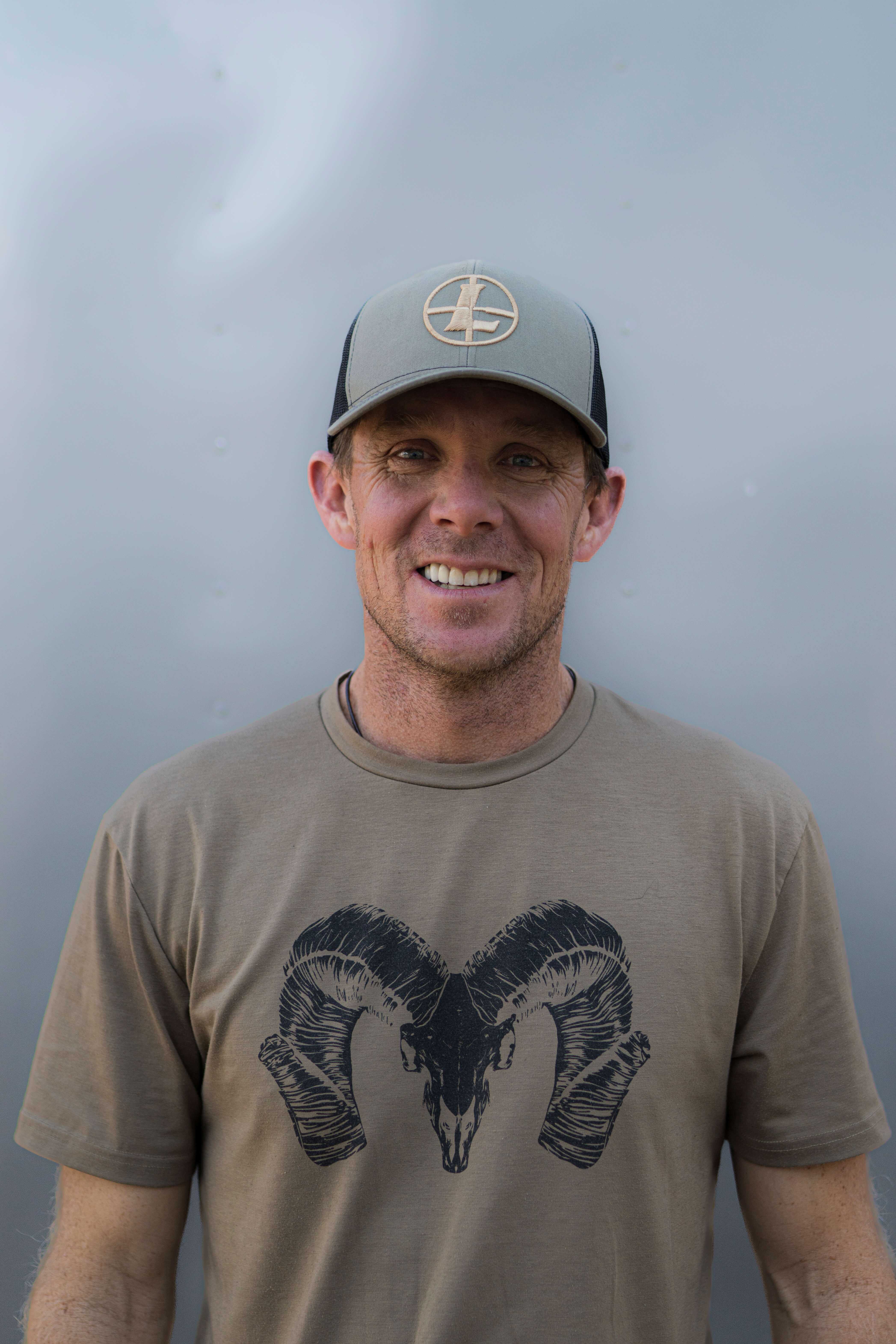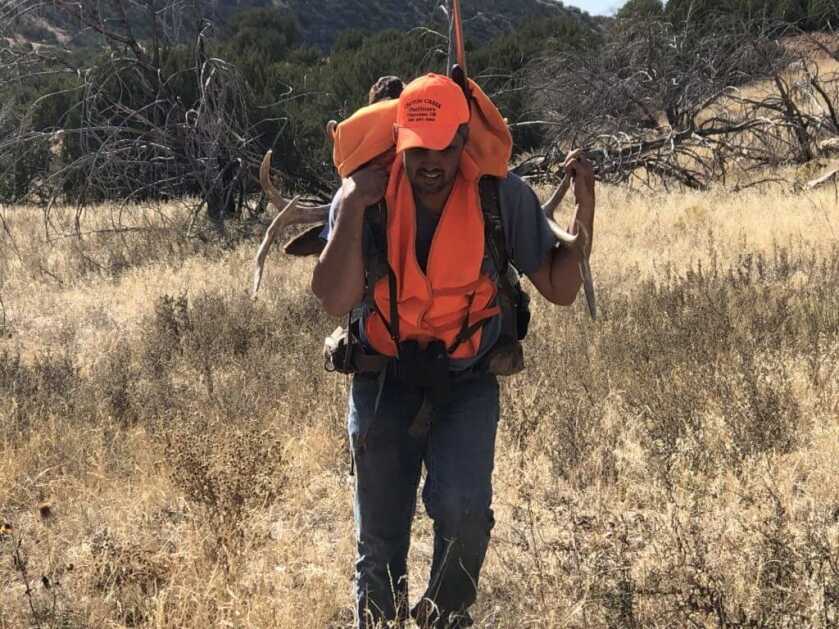
Elk hunting on public land isn’t for the faint of heart. It’s a grind. Regardless of the weapon you choose to tote, you can expect pressure from other hunters, daunting terrain and days where the lenses of your binos detect no hide. In short, elk hunting public dirt can suck.
Of course, when the stars align and a bull is spotted, the “suck” fades away pretty darn quick. A bull elk is a magical sight — chocolate horns and a body that makes even a giant Midwest whitetail look small. Gosh, they give me chills.
First Time
I couldn’t wait to take my Sooner State friends on their first elk adventure. I wanted to share the “suck” with them. They’d been shooting a lot and were dialed-in out to 500 yards. What they hadn’t prepared for, however, was the terrain and sheer physicality of the hunt. They weren’t ready to cover miles on foot — climb and descend steep canyons — negotiate shale rock and loose sidehill dirt.
They did it, but it wasn’t enjoyable for them. Part of the public-land elk hunting equation is getting away from the crowds. I’ve found the more daunting the terrain, the steeper it is right out of the gate, the fewer hunters I run into. This spot was exactly that.
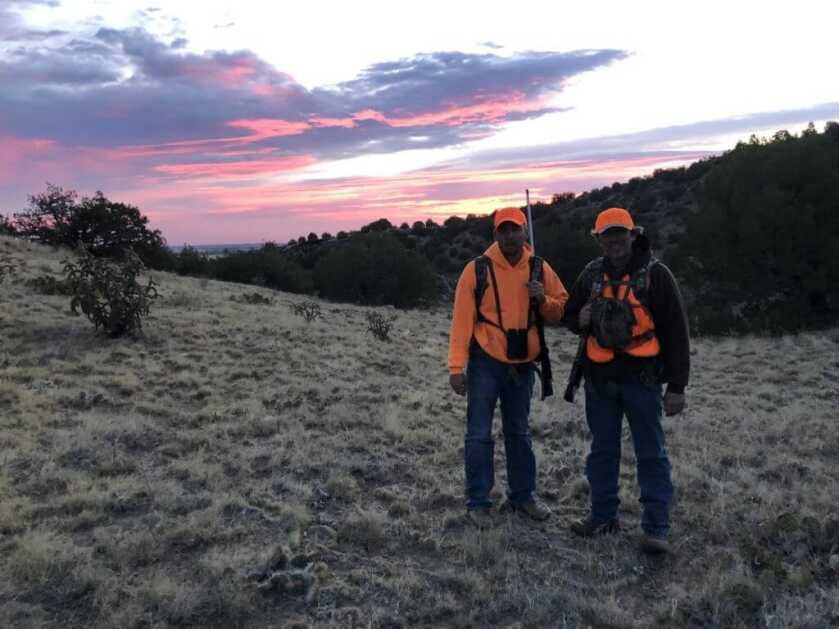
The first time we made the climb wasn’t terrible, but it wasn’t smooth either. Neither had boots suitable for the terrain. One wore a pair of Ariat moccasin-like slippers. No good. My advice is to always buy the best set of boots you can afford. You want something with stiff uppers, a comfortable midsole, and great tread. If you get blisters, you’re done!
That night, from a rock perch, we spied a massive bull. He would push the tape beyond 300 inches but was well over a mile away. The wind was for crap, and getting to him before the sun traded places with the stars wasn’t going to happen. The plan was to return the following morning and be on the glass at first light.
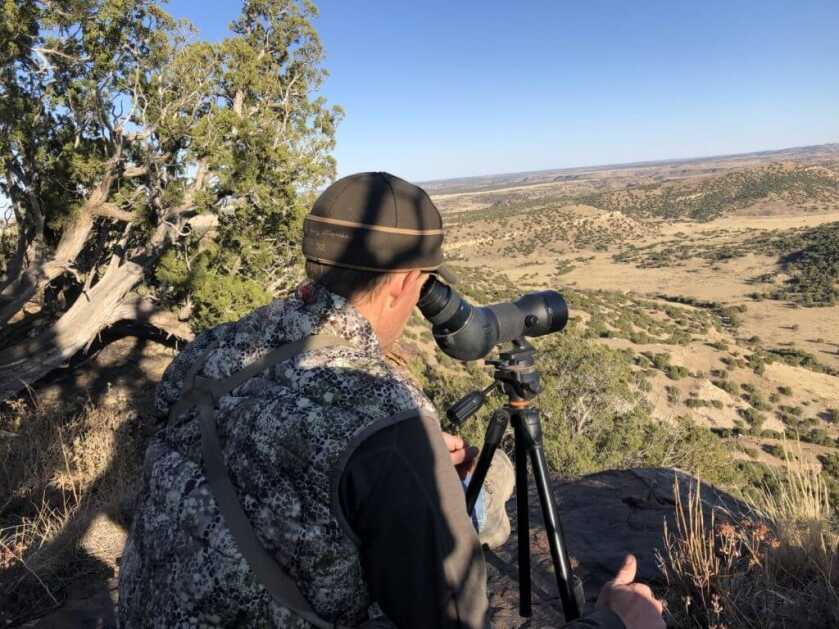
The second trip up the ridge, the following morning, was bad. My pair of buddies, as tough as they are, were sucking wind and in pain. Feeling miserable takes the enjoyment out of the hunt. In addition, it causes you to take shortcuts and make bad decisions. You don’t walk the extra half-mile to keep the wind right. You don’t grid search a hillside with your spotting scope to the full extent. Being in top physical shape is a staple of the successful elk hunter. Not to mention, this is your dream hunt, right? How can it be a dream — how can you focus on the sheer majesty of the country — if you’re miserable?
Oh, No!
He wasn’t the bull from the night before, but he was a respectable candidate and was in a great position for a stalk. He and his herd of cows were grazing along a cedar and pine-dotted hillside. They were exactly 866- yards away and had no clue we were in the area. The wind was right, but the thermals were rising. We needed to let them stabilize and start pulling down the ridge before making a stalk. Patience was going to be the key.
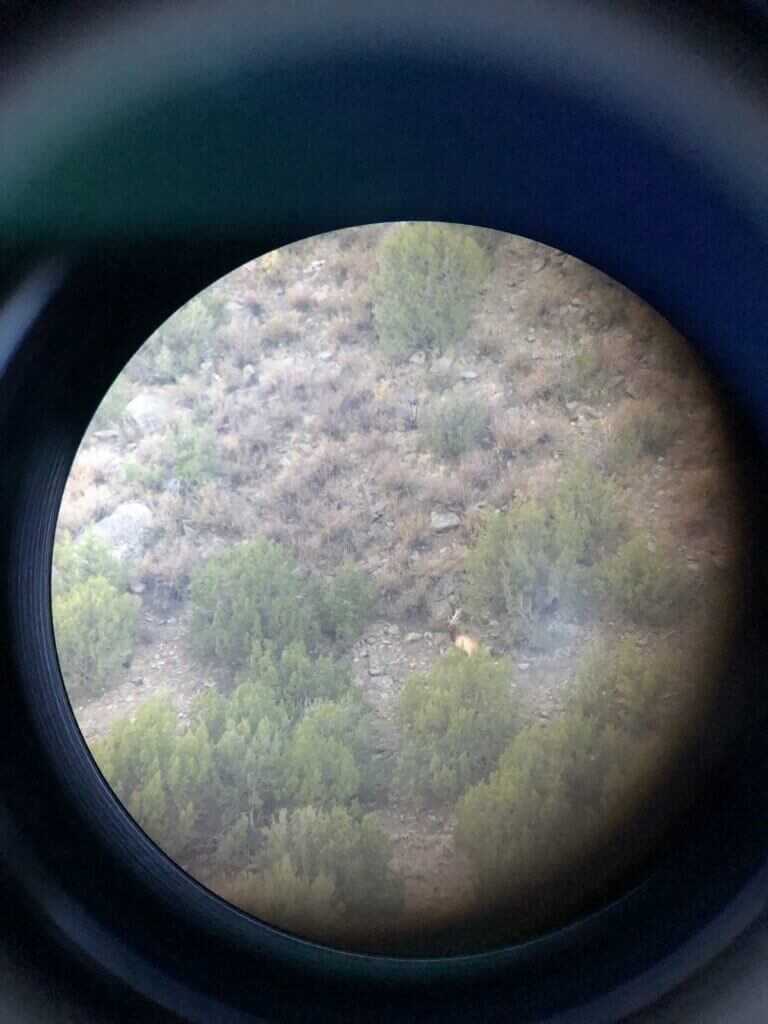
The plan was for my buddy Scott to shoot first. There was a spike in the bunch, and after Scott dropped the 5×5, Josh would send lead toward the spike.
They made a perfect approach. I stayed on the rim and watched through my Nikon spotter. I guessed the shot to be around 300 yards. It was 286 to be exact. The first shot broke. The bull ducked slightly and looked over his left shoulder. He did hunch a tad as if hit, but before I could evaluate the situation, a second shot rang out. The bull buckled in the front-end and tried to surge forward down the mountain. I didn’t see him fall but could hear the crash in the timber. I was elated. I was jumping up and down on the rim of the canyon pumping my fist with no one to hug.
I made haste down the canyon wall and across to the other side. The first words from my amigos: “First shot or second?” I explained I wasn’t sure. I honestly thought both shots hit the elk and were from the same shooter. That wasn’t the case. After Scott let the first shot rip, Josh assumed he had missed and followed up seconds later.

Autopsy Please …
Neither Scott nor Josh had ever seen a dead elk and were blown away by the bull’s size. I told them to relax and just enjoy the moment. I love cutting and boning-out meat and wanted to handle the task for them. Relax, however, they could not. Both were going back-and-forth about who had shot the bull. All I could do was listen and confirm that there was only a single hole. Josh dug the bullet out, which didn’t help matters. Scott was shooting a 7mm Rem. Mag. and Josh a .300 Win. Mag. I’m no forensic scientist and couldn’t determine what bullet it was just by looking at it. The argument raged on.
Sadly, for both, the joy of the experience was being sucked down the toilet. Here we were in the wilds of elk country, a dead public-land bull at our feet, and the only one enjoying the moment was me.
The pack-out was miserable. Neither had packs suitable for packing meat, which made the two-mile jaunt a terrible one. When we reached the truck, my friend and hard-core rifle hunter Jason Weaver did an examination of the bullet. The bullet’s back-end fit nicely into a spent .300 Win. Mag. cartridge. It was Josh’s bull. The second shot had done him in.

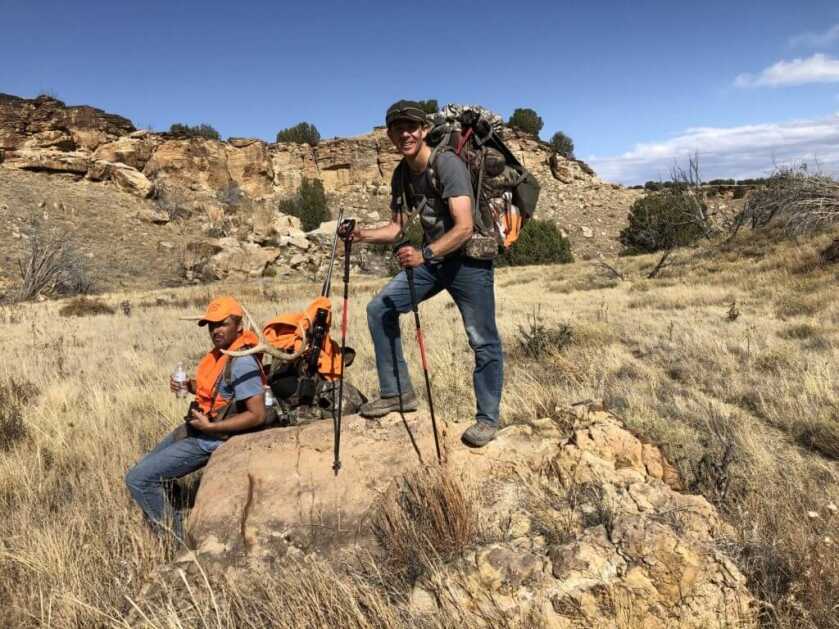
Should Josh have shot? I don’t know the answer to that question. What I do know is that nightmares like this can be avoided. If you and a hunting partner are going to hunt side-by-side, you need to run through every possible scenario long before you find yourself in one of them. Be clear with each other. Communication is the key. Even once Josh found out it was definitely his bull, he could hardly enjoy it. He felt like Scott was upset. Not to mention both of them were so terribly exhausted that they opted to leave for home the very next day. Scott ate a $700 tag.
If you’re planning an elk adventure, start preparing now. I don’t tell this story to rag on my two buddies. They are great friends and excellent hunters. I throw myself under the bus a lot when I write. My goal is to help and educate others. Get in shape, get the right gear and have the hard conversations.


